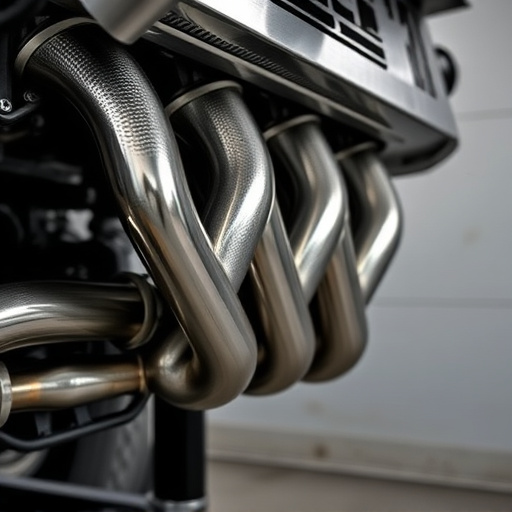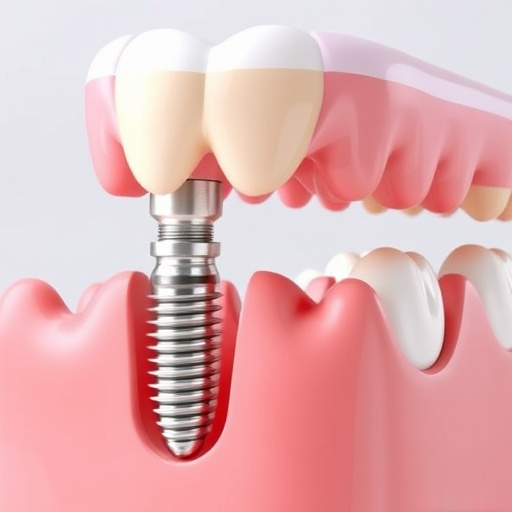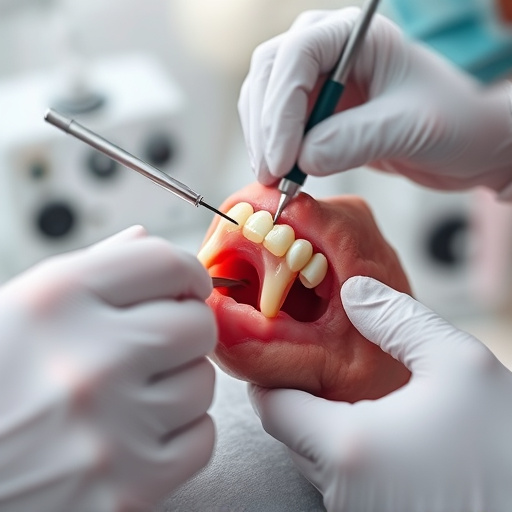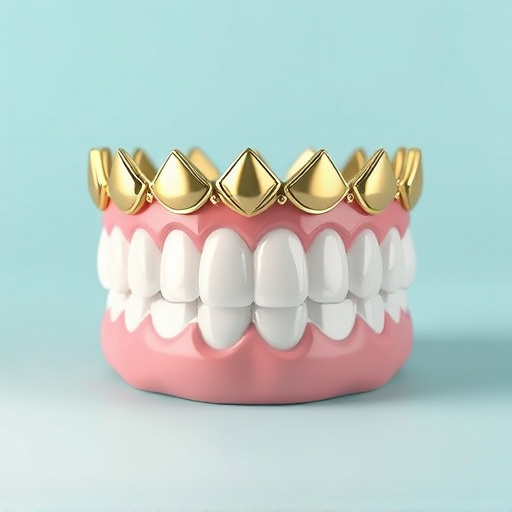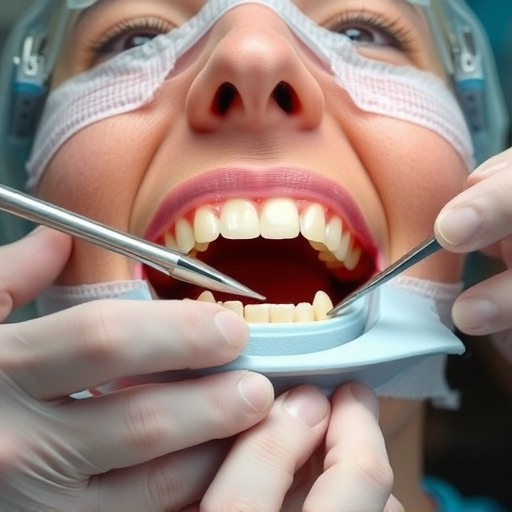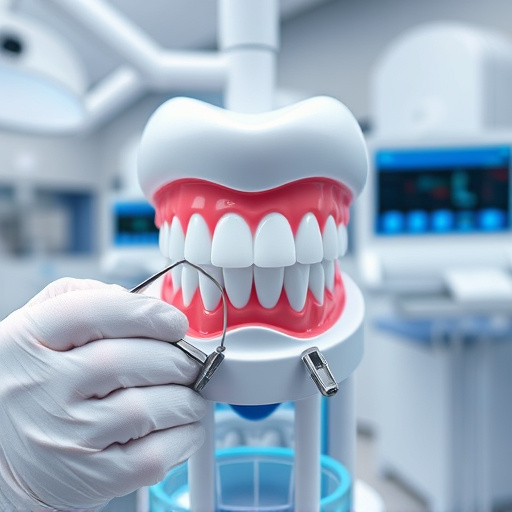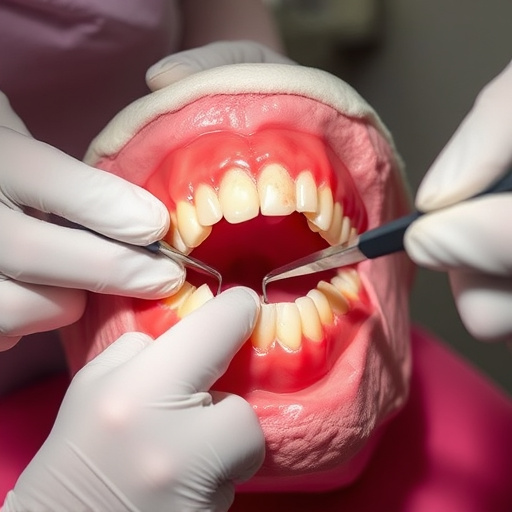Dental bridge replacement is a restorative dentistry solution for missing teeth, enhancing aesthetics and oral function. The process begins with an initial consultation, including oral health assessment and precise measurements using advanced technologies. After preparing surrounding teeth and taking impressions, a custom-made bridge is crafted, fitted, and adjusted. Post-procedure, patients enjoy improved smile, chewing, and speech clarity, with long-term stability and functionality, lasting many years with proper care. Dental bridges offer a cost-effective and quicker alternative to dental implants.
“Considering dental bridge replacement for your upper and lower teeth? This comprehensive guide is your roadmap. Discover the transformative power of modern dentistry as we explore dental bridge replacement, a lasting solution for missing teeth. From understanding the procedure to post-placement benefits and considerations, you’ll gain valuable insights. Learn how this advanced technique can restore your smile, enhance oral health, and provide a functional, natural-looking alternative to traditional dentures or implants.”
- Understanding Dental Bridge Replacement
- The Process of Upper and Lower Teeth Bridge Replacement
- Benefits and Considerations After Bridge Placement
Understanding Dental Bridge Replacement

Dental bridge replacement is a crucial procedure in restorative dentistry, offering a long-lasting solution for missing teeth. It involves crafting a custom-made bridge that seamlessly replaces one or more missing teeth, both on the upper and lower jaws. This process not only improves aesthetics but also restores oral functionality, enabling patients to chew, speak, and smile with confidence.
The procedure begins with an initial consultation where the dentist assesses the patient’s oral health and determines the best course of action. This may include dental cleanings to ensure optimal oral hygiene before starting the bridge replacement process. Advanced technologies, such as clear aligners, can also be utilized during this phase for precise measurements and a more comfortable experience for the patient.
The Process of Upper and Lower Teeth Bridge Replacement

Dental bridge replacement for upper and lower teeth involves a meticulous process designed to restore oral function and aesthetics. It begins with an initial consultation where the dentist assesses the patient’s mouth, taking X-rays and discussing expectations. If a dental bridge is deemed suitable, the procedure involves several steps. Firstly, the dentist prepares the surrounding teeth by shaping them to accommodate the bridge. This might require some tooth enamel removal to ensure proper fit. After this, impressions of the teeth are taken to create a custom bridge that perfectly matches the patient’s mouth.
During the next visit, the old bridge is removed and any necessary tooth repair, including wisdom tooth removal if required, is carried out. The new bridge is then fitted and adjusted for comfort and proper alignment. Preventive dentistry plays a crucial role in maintaining the longevity of these bridges, requiring regular check-ups and meticulous oral hygiene practices to ensure they remain secure and functional.
Benefits and Considerations After Bridge Placement

After successful dental bridge replacement for upper or lower teeth, patients can expect a number of significant benefits. A well-fitted bridge not only restores the aesthetic appearance of your smile but also improves chewing function and speech clarity. By securely connecting an artificial tooth (or teeth) to surrounding natural teeth, bridges provide long-term stability and functionality, effectively replacing missing dentition for both upper and lower arches. This comprehensive dental care solution can last for many years with proper oral hygiene practices.
Considerations for patients after bridge placement are crucial for ensuring optimal results. It’s important to maintain regular dental check-ups and follow your dentist’s recommendations for post-operative care, including avoiding hard or sticky foods that could dislodge the bridge. In addition, while dental implants offer exceptional long-term solutions for tooth repair, bridges remain a valuable option, particularly when cost-effectiveness and quicker treatment times are priorities. Comprehensive dental care involves ongoing maintenance, and with proper care, bridges can continue to provide effective, durable solutions for missing teeth.
Dental bridge replacement for both upper and lower teeth offers a lasting solution for missing dentition, enhancing both function and aesthetics. By understanding the process and considering the post-placement benefits, individuals can make informed decisions about this effective treatment. Dental bridge replacement continues to be a preferred choice in oral restoration, allowing patients to enjoy a complete and confident smile.




